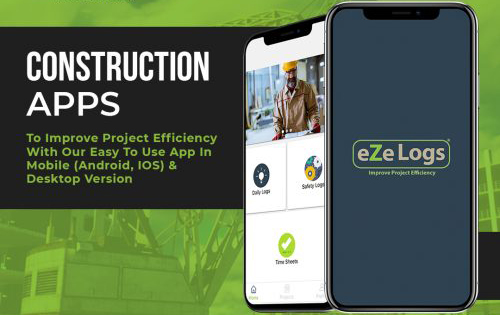In the world of construction, effective payment procedures are vital for project success. Subcontractors, key players in project realization, must understand invoicing intricacies to maintain cash flow and relationships. With complex projects involving many stakeholders and tight schedules, subcontractors often grapple with accurate invoice, proper documentation, and timely payments. Delays can ripple across projects.

This article focuses on invoicing guidelines for construction subcontractors. We’ll explore invoice essentials, highlight legal considerations, and offer insights for navigating payment procedures. By adopting best practices, using tech, fostering communication, and learning from real cases, subcontractors can enhance invoice manage challenges, and contribute to seamless projects.
Let’s delve into payment complexities in construction, equipping subcontractors with tools to optimize invoicie and strengthen their role in project execution.
Understanding Invoicing in the Construction Sector
In the collaborative world of construction, understanding the essence of invoicing is pivotal. It’s more than a routine task; it’s a core element influencing a project’s financial health. Subcontractors, central to construction endeavors, must grasp invoice intricacies to maintain cash flow and positive relationships.
An invoice encapsulates work, materials, and services by a subcontractor. It formally requests payment, detailing costs and terms. A well-crafted invoice not only ensures timely payment but also fosters transparency between subcontractors and contractors.
In construction, invoicing extends beyond billing. It meticulously documents tasks, resources, and milestones, vital for complex projects with multiple synchronized subcontractors.
Essential Invoice Components:
- Contractor and Subcontractor Details: Clear contact information avoids confusion.
- Work Description: Detailed breakdown of tasks, services, and materials.
- Cost Breakdown: Transparently lists labor, materials, equipment, and expenses.
- Timeline and Milestones: Highlights progress and justifies invoiced amounts.
- Payment Terms: Specifies due dates, methods, and incentives.
Invoicing isn’t just financial; it’s communication. It keeps stakeholders informed. Accuracy in invoices ensures workflow and avoids delays.
In upcoming sections, we explore legal considerations, best practices, and strategies for smoother invoicing. Subcontractors mastering invoicing enhance their construction role and project execution.
Legal and Regulatory Considerations
In construction, invoicing involves intricate projects and various stakeholders. Subcontractors must grasp legal nuances for smooth payments and project advancement.
1. Contractual Agreements:
- Understand subcontract terms.
- Align invoices with milestones.
2. Prompt Payment Laws:
- Know local payment laws.
- Adhere to payment timelines.
3. Documentation:
- Keep accurate records.
- Support invoices with documentation.
4. Taxation and Reporting:
- Follow tax rules.
- Include tax details on invoices.
5. Dispute Resolution:
- Outline conflict resolution.
- Address invoicing conflicts.
6. Subcontractor Licensing:
- Meet licensing rules.
- Display licenses if needed.
7. Data Privacy:
- Protect sensitive info.
- Secure invoice details.
8. Change Orders:
- Record scope changes.
- Update invoices accordingly.
9. Consistency and Accuracy:
- Maintain clear invoicing.
- Ensure accurate cost breakdowns.
Subcontractors must adapt to evolving regulations. Non-compliance risks payment delays and disputes. Adhering to rules fosters professionalism and reliability in construction.
In upcoming sections, we’ll explore best practices, aligning invoicing with legal needs, ensuring smoother payments, and nurturing strong contractor relationships.
Best Practices for Creating Construction Invoices
In the construction landscape, invoice is more than a formality—it’s a strategic process impacting cash flow and relationships. Subcontractors must adhere to best practices for clear, efficient, and accurate invoices.
1. Clear Descriptions:
- Detail services and work performed.
- Avoid confusion with clear language.
2. Accurate Costs:
- Break down labor, materials, expenses.
- Transparency in project expenses.
3. Milestone Alignment:
- Tie invoices to project milestones.
- Justify invoiced amounts with progress.
4. Timely Submissions:
- Prompt invoice submissions.
- Stick to agreed-upon schedules.
5. Documentation:
- Back invoices with relevant proof.
- Verify tasks and materials used.
6. Consistent Format:
- Use standardized templates.
- Maintain a professional look.
7. Payment Terms:
- Specify terms and due dates.
- Clarify accepted payment methods.
8. Attention to Detail:
- Review for accuracy.
- Avoid payment delays due to errors.
9. Digital Tools:
- Explore invoicing software.
- Streamline and minimize errors.
10. Communication:
- Keep open communication with contractors.
- Address queries promptly.
Following these practices not only streamlines payments but also fosters stronger subcontractor-contractor relationships. Effective invoices contribute to project success.
Upcoming sections explore technology’s role, payment strategies, and real cases for insight. Mastering these practices enhances invoice efficiency and benefits the construction sector.
Navigating Payment Procedures
Navigating Payment Procedures in Construction Invoicing
In the intricate world of construction invoicing, understanding payment procedures is essential for subcontractors to ensure timely compensation and maintain project momentum. Navigating these procedures requires a strategic approach that encompasses submission, approval, and dispute resolution.
1. Invoice Submission Process:
- Follow designated submission channels.
- Include all necessary details and documentation.
- Double-check accuracy before sending.
2. Approval Workflow and Documentation:
- Understand the approval hierarchy.
- Ensure all required approvals are obtained.
- Maintain records of approval communications.
3. Dispute Resolution Mechanisms:
- Familiarize yourself with the subcontract’s dispute resolution process.
- Address discrepancies promptly and professionally.
- Provide supporting evidence if disputes arise.
4. Tracking and Monitoring:
- Keep track of invoice submission and approval dates.
- Set up reminders for pending approvals.
- Monitor payment progress and timelines.
Navigating payment procedures requires attention to detail, communication, and adherence to established protocols. Delays in payments can disrupt subcontractor cash flow and project timelines, making it crucial to proactively manage the invoicing process.
In the upcoming sections, we will delve into the role of technology in streamlining payment procedures, strategies to enhance communication and collaboration, and real-life case studies that highlight effective navigation of payment processes. By mastering these techniques, subcontractors can ensure smoother payment procedures and contribute to the successful execution of construction projects.
Technology and Tools for Streamlining Invoicing
Streamlining Construction Invoicing with Technology
In the digital age, technology offers transformative solutions for optimizing construction invoice processes. Subcontractors can harness various tools to enhance accuracy, efficiency, and communication within the invoicing ecosystem.

1. Digital Invoicing Platforms:
- Explore specialized invoicing software.
- Automate invoice, reducing errors and saving time.
- Receive alerts for overdue payments.
2. Cloud-Based Collaboration:
- Collaborate on invoices in real-time.
- Facilitate seamless communication between subcontractors and contractors.
- Store and access invoices securely from anywhere.
3. Mobile Apps:
- Use mobile apps for on-the-go invoice.
- Capture and attach job-related expenses and documents.
- Maintain consistent invoicing even in the field.
4. Electronic Signatures:
- Expedite approval processes with e-signatures.
- Enhance document security and reduce paperwork.
5. Data Analytics:
- Leverage data insights to refine invoice strategies.
- Identify trends, bottlenecks, and opportunities for improvement.
Embracing technology not only streamlines invoicing but also strengthens subcontractor-contractor relationships. The efficiency gained translates into smoother payment procedures and enhanced project management.
In upcoming sections, we will delve into effective communication practices, case studies exemplifying successful technology integration, and strategies for addressing common payment challenges. By integrating technology effectively, subcontractors can navigate the complexities of invoicing with ease and contribute to construction project excellence.
Communication and Collaboration
Communication and Collaboration in Construction Invoicing
Effective communication and collaboration are vital for successful construction invoicing. Subcontractors must establish transparent interactions with contractors to ensure smooth payments and project advancement.
1. Clear Expectations:
- Set payment and submission expectations.
- Define timelines and approval procedures.
2. Regular Updates:
- Communicate milestone completions.
- Ensure timely invoicing.
3. Addressing Concerns:
- Encourage open payment discussions.
- Resolve queries promptly.
4. Documented Communication:
- Keep records of all invoicing communication.
- Track approvals and disputes.
5. Collaboration Tools:
- Use digital platforms for efficient collaboration.
- Share invoices and track progress.
Effective communication not only streamlines invoicing but also nurtures professional relationships. Transparent communication encourages prompt payments and smoother project execution.
In the upcoming sections, we’ll explore real cases, strategies for tackling payment challenges, and conclude with the significance of effective invoicing in construction. By mastering communication, subcontractors can contribute to successful projects.
Mitigating Payment Challenges in Construction Invoicing
Addressing Payment Challenges in Construction Invoicing
In construction invoicing, subcontractors tackle payment hurdles impacting cash flow and timelines. Proactive steps manage these challenges, ensuring smoother transactions and projects.
1. Clear Contract Terms:
- Define milestones, due dates, penalties.
2. Regular Follow-Up:
- Send payment reminders.
- Promptly chase unpaid dues.
3. Documented Communication:
- Keep records for disputes.
4. Dispute Resolution:
- Outline resolution steps.
- Address issues promptly.
5. Collaborative Approach:
- Open communication prevents escalations.
6. Financial Planning:
- Prepare for delays.
- Maintain cash reserves.
7. Legal Options:
- Know dispute routes.
Subcontractors tackling these challenges bolster financial stability, contributing to successful projects.
Final thoughts
Navigating the complexities of construction invoicing requires a strategic blend of communication, collaboration, and adherence to legal considerations. Subcontractors who adopt best practices, leverage technology, and maintain clear communication can streamline payment processes, foster positive relationships, and ensure the seamless execution of construction projects. By mitigating challenges, staying informed about regulations, and optimizing invoicing practices, subcontractors solidify their role as essential contributors to the construction sector’s success.


